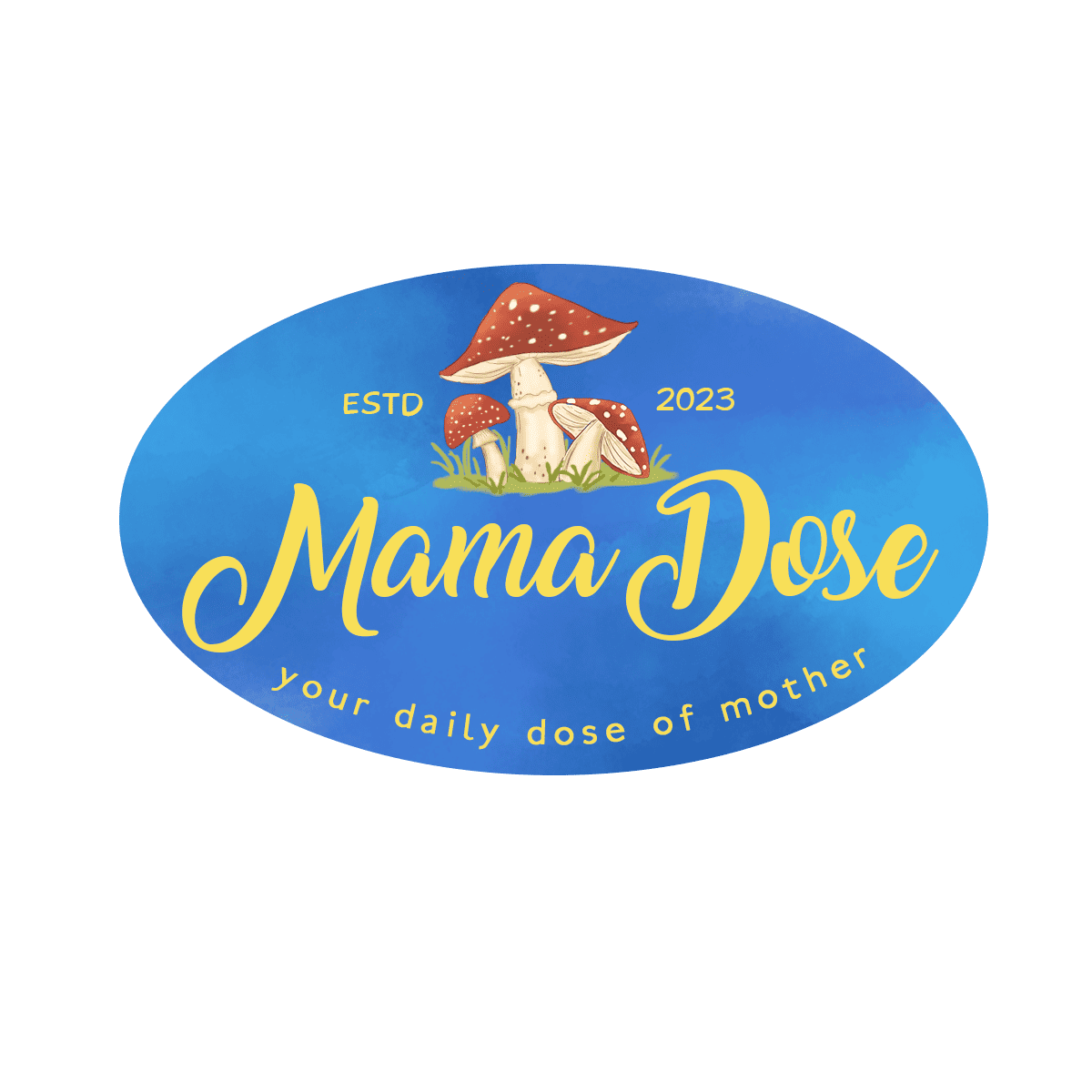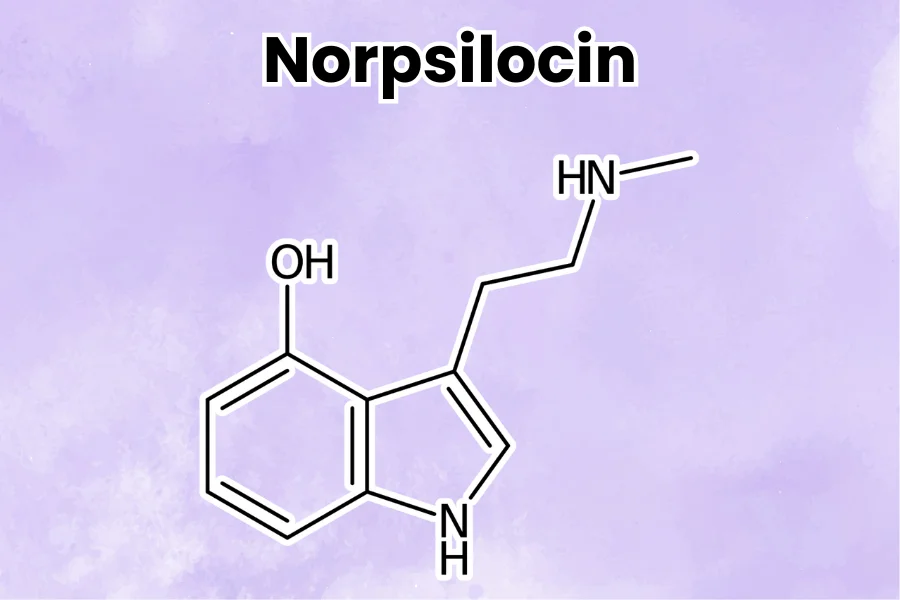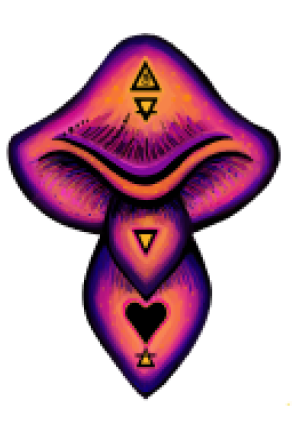

The two main active compounds in magic mushrooms are psilocybin and psilocin, and it’s no secret. However, many people don’t even realize that psychedelic mushrooms have other compounds apart from these two. All these compounds are fundamental for the effects magic mushrooms produce.
Among these compounds are baeocystin, norpsilocin, norpsilocin, and various others. Each of these compounds potentially induces distinct effects and contributes to the psychedelic effects you can experience. Let’s take a better look at what’s inside magic mushrooms!

Psilocybin and psilocin should be studied first before exploring the other alkaloids found in magic mushrooms. Psilocybin is usually the main topic of discussion when talking about the hallucinogenic effects. However, psilocybin on its own isn’t responsible for all psychedelic effects. Rather, it functions as a pro-drug.
A pro-drug is a substance that is in most cases inactive and converts to its active counterpart by the action of enzymes and other chemicals found within our body.
Psilocybin requires conversion into psilocin to become active and produce its effects. The conversion happens within our bodies through a process called dephosphorylation. This chemical reaction involves the removal of a phosphate group from psilocybin, resulting in the formation of psilocin. Once psilocybin is dephosphorylated to psilocin, the latter becomes more lipid-soluble, allowing it to be metabolically available in the body and more easily absorbed in the intestines.
When talking about the psychedelic effects, psilocin without a doubt takes center stage. It interacts with serotonin receptors in the brain, specifically the 5HT2A receptors, mimicking serotonin. One bound to these receptors the usual hallucinogenic effects occur such as opened and closed-eye visuals, euphoria, distortion of time and space, and altered state of consciousness.

Baeocystin is perhaps one of the most well-known secondary chemicals present in magic mushrooms. Because baeocystin and psilocybin are analogs of one other, their molecular structures are likely quite similar, implying that they may have similar effects on the brain.
Interestingly, beocystin is not present in all species of magic mushrooms. The usual concentration of baeocystin in psilocybin-containing mushrooms is unknown, however, it is thought to occur in trace amounts within these samples. Despite the minimal amounts, it still potentially influences the overall effects of the trip.
The lack of actual evidence about baeocystin contributes to the prevailing skepticism. The study that was done on the substance found no evidence of any impact on mice. However, additional research is necessary to support this theory, the researchers hypothesize that baeocystin and psilocin may interact synergistically.

Norbaeocystin was discovered concurrently with baeocystin, back in 1968, when Leung and Paul isolated the derivative from Psilocybe baeocystis along with the related compound baeocystin. The mycologists named the mushroom after these compounds.
It is believed that this compound also exists in common magic mushrooms like Psilocybe cubensis. It is commonly assumed that norbaeocystin lacks psychedelic properties. However, these assertions lack both scientific and anecdotal support. Due to its limited study, the true nature of norbaeocystin remains largely unknown. One of the few studies conducted suggests that it might serve as an intermediate compound in the synthesis of psilocybin.

Norpsilocin, a derivative of psilocybin, was discovered in 2017 by scientists at the Hans-Knöll Institute in Germany. They isolated it from the psychedelic mushroom Psilocybe cubensis, the mushroom species you commonly find in your microdosing and macrodosing products.
Similar to psilocin, norpsilocin possesses a nearly identical chemical structure, albeit lacking a methyl group. However, it is postulated that this compound functions as the metabolite of baeocystin. A metabolite is a substance formed when the body metabolizes another compound. For instance, psilocin is the metabolite of psilocybin.
In 2020, Sherwood and colleagues did the first tests on norpsilocin in living organisms. They started by testing baeocystin on mice and found out that it couldn’t pass the blood-brain barrier unless metabolized to norpsilocin.
Another experiment demonstrated that norpsilocin could activate 5HT2A receptors, similar to psilocin. What’s intriguing is that norpsilocin exhibited superior receptor activation compared to psilocin. This suggests that norpsilocin might possess greater potency than psilocin. However, its lack of observable effects could be attributed to its potential rapid breakdown in the body.

This compound was initially isolated by German mycologist Jochen Gartz from Inocybe aeruginascens mushrooms. According to his findings, aeruginascin is closely related to the frog skin toxin bufotenine and it serves as an analog of psilocybin, sharing a close resemblance with only a slight molecular difference.
Despite its significance, little is known about aeruginascin apart from Gartz’s own findings. In his research, he examined instances of accidental mushroom poisoning with this mushroom and the findings are interesting. Gartz noted that individuals who unintentionally consumed Inocybe mushrooms reported euphoric experiences, whereas those who ingested different psilocybin mushrooms experienced negative moods. The findings suggest that aeruginascin may enhance euphoric sensations in magic mushrooms.

In a 2019 study, researchers discovered the presence of ß-carboline in magic mushrooms. This finding holds significance because ß-carbolines are also a key component of ayahuasca brew as they’re present in the bark of Banisteriopsis Caapi. It’s suggested that this compound is responsible for experiencing a dream-like state.
ß-carbolines act as MAOIs (Monoamine Oxidase Inhibitors), which enhances the overall effects of psychedelics. For instance, without MAOIs, the ayahuasca brew wouldn’t cause such profound and strong effects.
It is speculated that ß-carbolines in magic mushrooms might enhance the effects of psilocin by blocking the action of MAOIs. This is significant because the alkaloids present in magic mushrooms are also subject to breakdown by these MAO enzymes.
It becomes clear that psilocybin is not the only substance responsible for the psychedelic effects of magic mushrooms as we explore deeper into their complex structure. The psychedelic experience becomes complex when substances like norpsilocin, baeocystin, norbaeocystin, and others are present.
Even though we are still learning a lot about these substances, it is clear that they have the ability to affect the magic mushroom trip. Each chemical has the potential to increase potency and enhance euphoric feelings opening up fresh possibilities for exploration.
As researchers continue to unravel the mysteries of magic mushrooms, it’s clear that there is much more to discover beyond what we already know. With each new finding, we inch closer to a deeper understanding of these enigmatic fungi and the profound experiences they offer.
